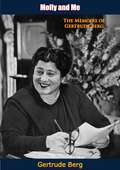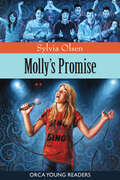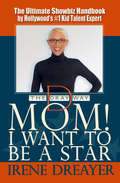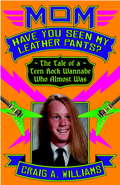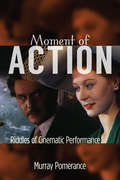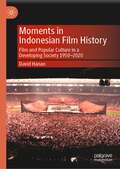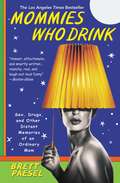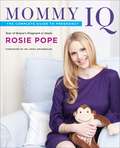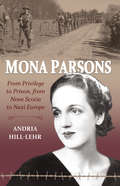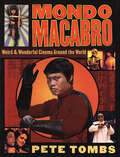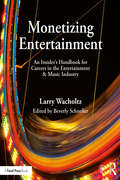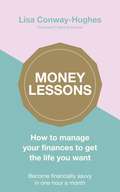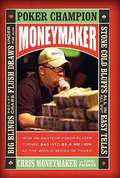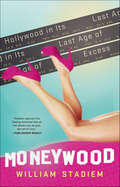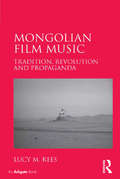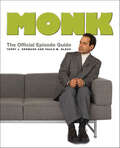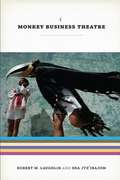- Table View
- List View
Molecular Capture: The Animation of Biology (Posthumanities #63)
by Adam NocekHow computer animation technologies became vital visualization tools in the life sciences Who would have thought that computer animation technologies developed in the second half of the twentieth century would become essential visualization tools in today&’s biosciences? This book is the first to examine this phenomenon. Molecular Capture reveals how popular media consumption and biological knowledge production have converged in molecular animations—computer simulations of molecular and cellular processes that immerse viewers in the temporal unfolding of molecular worlds—to produce new regimes of seeing and knowing.Situating the development of this technology within an evolving field of historical, epistemological, and political negotiations, Adam Nocek argues that molecular animations not only represent a key transformation in the visual knowledge practices of life scientists but also bring into sharp focus fundamental mutations in power within neoliberal capitalism. In particular, he reveals how the convergence of the visual economies of science and entertainment in molecular animations extends neoliberal modes of governance to the perceptual practices of scientific subjects. Drawing on Alfred North Whitehead&’s speculative metaphysics and Michel Foucault&’s genealogy of governmentality, Nocek builds a media philosophy well equipped to examine the unique coordination of media cultures in this undertheorized form of scientific media. More specifically, he demonstrates how governmentality operates across visual practices in the biosciences and the popular mediasphere to shape a molecular animation apparatus that unites scientific knowledge and entertainment culture.Ultimately, Molecular Capture proposes that molecular animation is an achievement of governmental design. It weaves together speculative media philosophy, science and technology studies, and design theory to investigate how scientific knowledge practices are designed through media apparatuses.
Moliere Today 1
by Michael SpinglerThis collection focuses on Moliere's theatre as works to be performed as well as read. The essays deal in their various ways with limits which are imposed and respected or violated and broken. The question of transgression both as a subject within Moliere's plays and as a dilemma confronting Moliere's critics and interpreters is addressed. The book aims to enlarge the scope of academic scholarship and include the thinking and insights of actors.
Moliere Today 2
by Michael SpinglerThe refusal on the part of academic critics to recognize the primacy of farce in Moliere's theatre is contradicted by wide spread theatrical pracitce. These essays develop the argument that Moliere needs to be rescued from the pantheon of classical literature and put back on the Pont-Neuf with the strolling players, low-life rogues, cut-purses and clowns with whom he filled his theatre.
Molly and Me: The Memoirs of Gertrude Berg
by Gertrude Berg Cherney BergIn these warm, happy memoirs of one of America’s most beloved radio, television, and stage stars, a woman who has delighted millions of people tells her own wonderful story, from the arrival of her grandfather in this country to her triumph in the Broadway hit A Majority of One.Her story really begins with Grandpa Mordecai Edelstein, who came to America, as she proudly explained to the grandchildren, before the Statue of Liberty.Young “Tillie,” as Gertrude Berg was called, grew up in a most engagingly alive family of brothers, sisters, parents, grandparents, aunts, uncles, and cousins in Manhattan’s upper East Side. “Home,” she says, “was an apartment on the fourth floor of a house you called an apartment house if you wanted to be fancy, and a tenement if you wanted to be depressing.”One day, her highly unpredictable father bought a hotel in the Catskills, a million-dollar mansion, for $500 and his word of honor, which was worth the difference. What with cocky bellboys, temperamental headwaiters, lovesick cooks, hungry musicians—and the guests, and the rain—every member of the family was busy. It became Gertrude’s job to entertain the fretful guests whenever storm clouds gathered, and as a result, she began to read palms. But she soon started writing playlets with parts for as many guests as possible. She remembers “with particular pride such masterpieces as ‘Snow White and the Twenty-eight Dwarfs’ and ‘Thirty-three Blind Mice.’”After such an education, radio was a natural step for her. Her own family (protesting loudly) became models for the famous radio family, The Goldbergs, which has captivated audiences for thirty years. Her experiences in the early days of radio, the transformation of The Goldbergs from radio to television, and her wonderful friendship with Sir Cedric Hardwicke, co-starring on Broadways with her, are all recalled with gusto, excitement, and pride.
Molly's Promise (Orca Young Readers)
by Sylvia OlsenWhen Molly learns a talent competition is coming to town, her friend Murphy (A Different Game, Murphy and Mousetrap) becomes her manager. Molly is certain she is a good singer—she has been singing in her head for as long as she can remember. She doesn't sing out loud because of a promise she made to herself. Years ago, Molly vowed that her mom would be the first one to hear her sing. The only problem is, Molly knows nothing about her mom, who left when Molly was a baby. With the talent competition only weeks away, she has to decide whether to break her promise to herself and let her voice out into the world, or wait for her mother's uncertain return before singing for anyone else.
Mom in the Movies
by Turner Classic Movies, Inc. Richard CorlissWith a foreword written by Debbie Reynolds and her daughter Carrie Fisher, and sidebar essays by Eva Marie Saint, Illeana Douglas, Jane Powell, Sam Robards, and Tippi Hedren, this book is packed with an incredible collection of photographs and film stills. Mom in the Movies makes a great gift for any mom--and for anyone with a mother who oughta be in picturesFrom the cozy All-American mom to the terrifying Mommie Dearest or the protective Sigourney Weaver in Aliens, when it comes to mothers on the silver screen, it takes all kinds. Turner Classic Movies and film historian Richard Corliss presents Mom in the Movies, a definitive, fully illustrated book that shares the many ways Hollywood has celebrated, vilified and otherwise memorialized dear old Mom. Here, you will meet the Criminal Moms, like Shelley Winters in Bloody Mama, and the eccentric Showbiz Moms, including those from Gypsy and Postcards from the Edge. You'll also find Great American Moms, as warm and nourishing as apple pie, in movies such as I Remember Mama and Places in the Heart, along with Surrogate Moms, like Ginger Rogers in Bachelor Mother, Rosalind Russell in Auntie Mame, Dianne Wiest in Edward Scissorhands and Sandra Bullock in The Blind Side. And who can forget the baddest mothers of all? No book on movie moms would be complete without Angela Lansbury in The Manchurian Candidate.
Mom! I Want to Be a Star
by Irene DreayerThis is the ultimate show-biz how-to guide for aspiring kids and their parents, written by Hollywood&’s number-one kid-talent expert and executive producer for Disney, ABC, and the WB, Irene Dreayer (&“the Dray&”). As a thirty-year veteran of discovering kid stars and producing hit TV shows such as the Disney Channel&’s The Suite Life on Deck and The Suite Life of Zack & Cody, as well as several TV movies, Dreayer has seen hundreds of kids try to make it in show business. Most parents and kids don&’t understand the steps or how to navigate the ins and outs of the industry. Most make critical mistakes. As Hollywood&’s only trusted career coach for kid talent, Irene Dreayer developed the Dray Way (www.thedrayway.com) as her proven method for guiding show-biz kids and their parents on how to audition correctly, how to handle the business side, and how to deal with issues such as image and rejection. The Dray Way is her method for working with kids and training parents on how to pursue this business we call show in a strategic manner, the right way. This book is designed as a workbook for parents and kids to do together. Every chapter explains, informs, and delivers the honest truth about specific aspects of the entertainment business and outlines the crucial information kids and parents need to learn as a family. Some chapters are designed exclusively for parents, but most are a family affair. The exercises in each chapter are to be completed by parents and kids in order to learn the skills required to be a better actor, singer, or dancer. Mom! I Want to Be a Star is entertaining, fun to read, and a wonderful opportunity for families to explore together their child&’s dream and desire to become a star.
Mom, Have You Seen My Leather Pants? The Tale of a Teen Rock Wannabe Who Almost Was
by Craig A. WilliamsAt the height of the hair-metal craze, when the airwaves were dominated by ear-shredding guitar solos played by men clad in lace gloves, cowboy boots, and tight denim, when Aqua Net was more precious than gold, when MTV actually played music videos and not just shows likePimp My Locker, a band named Onyxxx (oneXwasn't nearly enough) came close to making it big. What stopped Onyxxx from taking its place beside legendary bands like Poison, Guns N' Roses, and Motley Crue? Sex, drugs, groupies, . . . and geometry homework. Craig Williams, Onyxxx's red-haired, head-banging guitarist, tells his tale of near rock stardom in Mom, Have You Seen My Leather Pants? With a manager who was a dead ringer for Loni Anderson, club owners willing to offer sexual favors and limo rides, and scads of California girls lifting their shirts and screaming their names, Craig knew what it was to be a star, until he realized that Onyxxx wasn't the second coming of Warrant. They just weren't that good. And Craig wasn't having fun anymore. A music memoir for any child of the 1980s and '90s, a nostalgic trip down Sunset Strip, and a hilarious tribute to a musical era we can only hope will never have a resurgence, Mom, Have You Seen My Leather Pants? will give you an appetite for destruction.
Moment of Action: Riddles of Cinematic Performance
by Murray PomeranceThere are hundreds of biographies of filmstars and dozens of scholarly works on acting in general. But what about the ephemeral yet indelible moments when, for a brief scene or even just a single shot, an actor's performance triggers a visceral response in the viewer? Moment of Action delves into the mysteries of screen performance, revealing both the acting techniques and the technical apparatuses that coalesce in an instant of cinematic alchemy to create movie gold. Considering a range of acting styles while examining films as varied as Bringing Up Baby, Psycho, The Red Shoes, Godzilla, and The Bourne Identity, Murray Pomerance traces the common dynamics that work to structure the complex relationship between the act of cinematic performance and its eventual perception. Mining the spaces where subjective and objective analyses merge, Pomerance offers both a deeply personal account of film viewership and a detailed examination of the intuitive gestures, orchestrated movements, and backstage maneuvers that go into creating those phenomenal moments onscreen. Moment of Action takes us on an innovative exploration of the nexus at which the actor's keen skills spark and kindle the audience's receptive energies.
Moments in Indonesian Film History: Film and Popular Culture in a Developing Society 1950–2020
by David HananThis book explores Indonesian cinema, focusing on moments of unique creativity by Indonesian film artists who illuminate important but less-widely-known aspects of their multi-dimensional society. It begins by exploring early 1950s ‘Indonesian neorealist films’ of the Perfini group, which depict the ethos and emerging moral issues of the period of struggle for independence (1945–49). It continues by discussing four audacious political allegories produced in four discrete political eras—including the Sukarno, Suharto and Reformasi periods. It also surveys the main approaches to Islam in both popular cinema and auteur films during the Suharto New Order. One chapter celebrates the popular songs and B-movies of the Betawi comedian, Benyamin S, which dramatize the experience of the poor in ‘modernizing’ Jakarta. Another examines persisting Third World dimensions of Indonesian society as critiqued in two experimental features. The concluding chapter highlights innovation in a renewed Indonesian cinema of the post-Suharto Reformasi period (1999–2020), including films by an unprecedented generation of women writer-directors
Mommie Dearest
by Christina CrawfordBiography of Joan Crawford's eldest daughter, who was loved and adored by her mother in public, but treated like a slave and prisoner in private.
Mommies Who Drink: Sex, Drugs, and Other Distant Memories of an Ordinary Mom
by Brett PaeselBrett Paesel's story of hip motherhood will have you bent over laughing while reaching for your martini glass. From her encounters with a celebrity pre-natal yoga guru to her obsession (since giving birth) with her own and everyone else's ass, she explores motherhood as lived by the "formerly fabulous." Wickedly funny and irreverent, yet deeply honest and touching, MOMMIES WHO DRINK confronts a brave new world of motherhood, and dares to ask the question "What time of day is too early to start drinking?"
Mommy IQ: The Complete Guide to Pregnancy
by Rosie PopeMommy IQ is the ultimate girlfriend’s guide to pregnancy. Rosie Pope—maternity fashion designer, pregnancy guru, and star of the hit TV show Pregnant in Heels on Bravo—leads expectant mothers through the ups and downs of pregnancy with her trademark humor and down-to-earth charm, tackling difficult issues with refreshing candor while offering useful information about medical support. The founder of MomPrep—a prenatal and postpartum education center—Rosie makes the journey to motherhood even more memorable with friendly advice, laugh-out-loud stories, and heartfelt, “been-there” insights. Mommy IQ is a must-own handbook for moms-to-be, young moms, and the families of expectant moms.
Mona Parsons: From Privilege to Prison, From Nova Scotia to Nazi Europe
by Andria Hill-LehrThe biography reveals the thrilling life story of a Canadian actress who went from dancing on Broadway to daring acts of survival in WWII. Even as a young girl, Mona Louise Parsons stood out for her elegance and theatrical flair. But despite the many roles she&’s played on the stage, the epic story of her real life always stole the show. After growing up in Nova Scotia, she was a chorus girl in 1920s New York City, a Depression-era nurse, a member of the Dutch resistance during World War II, and—after being taken prisoner by the Nazis—she became an escaped fugitive who walked across Germany in the war&’s final months. The process of uncovering the story of Mona Parsons took almost as many twists and turns as the life it was piecing together. This book traces the author's own journey as she follows clues from Wolfville, Canada, to New York, Europe and back, leaping across oceans and decades with imagination and grace.
Monday Night Mayhem the Inside Story of Abc's Monday Night Football
by Marc Gunther Bill CarterFollows the history of Monday Night Football from 1970 to 1988
Mondo Macabro: Weird & Wonderful Cinema Around the World
by Pete TombsPete Tombs, author of "Immoral Tales", now brings readers into the exotic, erotic, and eccentric international film scene. Fully illustrated, Mondo Macabro includes an Indian song-and-dance version of "Dracula"; Turkish version of "Star Trek" and "Superman"; China's "hopping vampire" films, among other movies, and much, much more. 332 illustrations of color photos.
Monetizing Entertainment: An Insider's Handbook for Careers in the Entertainment and Music Industry
by Larry Wacholtz<p><i>Monetizing Entertainment: An Insider's Handbook for Careers in the Entertainment and Music Industry</i> offers a thorough, guided exploration of the current state of the industry, with an emphasis on trends in copyright, digital streaming, and practical advice for developing a career as an artist, technician, or industry executive. <p>This book investigates a variety of topics within the entertainment and music industry, ranging from traditional and emerging business models to intellectual property rights to the creative destruction happening currently. The book strategically outlines the existing gaps that make being successful as an artist a dynamic interaction between creativity and business. <p>This book includes the following: <p> <li>An overview of the creative destruction process that has destroyed some of the old business models and created a number of career options. <li>A look at innovative, entrepreneurial career options. <li>A step-by-step examination for both creative and business professionals of the administrative and financial structures of the industry. <li>Detailed analysis of trends and topics shaping the current entertainment and music industry drawn from insiders' perspectives and other contemporary resources.</li> <p> <p>An accompanying website (www.routledge.com/cw/wacholtz), hosting case studies, videos, data, infographics, and blog posts on business models, is the perfect companion to this authoritative resource.</p>
Money Lessons: How to manage your finances to get the life you want
by Lisa Conway-HughesIf you spent one hour a month nurturing your finances for the next twelve months, how would you feel this time next year, what would be different? Mapping out a plan for achieving your big goals and managing everyday spending, Money Lessons is your own pocket financial expert. Whether you have it or not, money is often as difficult to talk about as it is to handle. Many of us will at one point need advice on how to:- ask for a pay rise- save up to buy a place- pay for a mortgage- finance a career move- budget for a wedding- fund a big trip- get out of debt- retire comfortablyBuilding on her 15 years of experience helping countless people to make smart financial decisions, Lisa Conway-Hughes tackles these topics in a short guide to being savvy and getting what you want in every stage of your life. Full of expert knowledge and success stories, this is essential reading for anyone who wants to turn a dream into a plan - and eventually a reality.
Money, Murder, and Dominick Dunne: A Life in Several Acts
by Robert HoflerDominick Dunne seemed to live his entire adult life in the public eye, but in this biography Robert Hofler reveals a conflicted, enigmatic man who reinvented himself again and again. As a television and film producer in the 1950s–1970s, hobnobbing with Humphrey Bogart and Natalie Wood, he found success and crushing failure in a pitiless Hollywood. As a Vanity Fair journalist covering the lives of the rich and powerful, he mesmerized readers with his detailed coverage of spectacular murder cases—O.J. Simpson, the Menendez brothers, Michael Skakel, Phil Spector, and Claus von Bülow. He had his own television show, Dominick Dunne's Power, Privilege, and Justic. His five best-selling novels, including The Two Mrs. Grenvilles, People Like Us, and An Inconvenient Woman, were inspired by real lives and scandals. The brother of John Gregory Dunne and brother-in-law of Joan Didion, he was a friend and confidante of many literary luminaries. Dunne also had the ear of some of the world's most famous women, among them Princess Diana, Nancy Reagan, Liz Smith, Barbara Walters, and Elizabeth Taylor. Dunne admitted to inventing himself, and it was that public persona he wrote about in his own memoir, The Way We Lived Then. Left out of that account, but brought to light here, were his intense rivalry with his brother John Gregory, the gay affairs and relationships he had throughout his marriage and beyond, and his fights with editors at Vanity Fair. Robert Hofler also reveals the painful rift in the family after the murder of Dominick's daughter, Dominique—compounded by his coverage of her killer's trial, which launched his career as a reporter.
Moneyball: The Art of Winning an Unfair Game
by Michael LewisMoneyball is a quest for something as elusive as the Holy Grail, something that money apparently can't buy: the secret of success in baseball.
Moneymaker: How an Amateur Poker Player Turned $40 into $2.5 Million at the World Series of Poker
by Daniel Paisner Chris MoneymakerThe story of how Chris Moneymaker turned $40 into $2.5 million at the World Series of Poker, detailing the hands he played and allowing each reader to see whether his success was due to skill or luck.
Moneywood: Hollywood in Its Last Age of Excess
by William StadiemAs wild and sexy and over the top as the decade it brings to life, author, William Stadiem, tells the inside story of Hollywood producers in the 80s.From hits like Beverly Hills Cop, Top Gun and Batman to flops like Heaven's Gate, Howard the Duck and Leonard Part 6, Hollywood was never more excessive than it was in the 1980s. In this, the Moneywood era, the purse strings were not controlled by reasonably consenting adults but by pop culture cowboys who couldn't balance their own checkbooks. What they could do was sweet talk the talent, seduce the starlets, snowball the Japanese and slither out of Dodge when the low grosses trickled in. Their out of control lifestyles and know-nothing, raging narcissistic personalities make the original brutal studio heads like Sam Goldwyn and Jack Warner seem like Oxford dons. Yet, for all their flops, these Scoundrels of Spago turned Hollywood into a Big Business that was catnip to Wall Street. They were The Producers, and they were way beyond anything Mel Brooks could dream up.The Moneywood cast of characters includes: -Simpson and Bruckheimer; Guber and Peters; Eisner/Katzenberg/Ovitz: An unusual fresh take on the usual subjects. -Ray Stark, the wizard of Holmby Hills, the most powerful producer of the 80s. -Mario Kassar and Andy Vajna, the Rambo boys, who went from making wigs to making blockbusters.-Menahem Golan-Yoram Globus, the Israeli schlockmeisters who proved that every star had a price.-David Begelman, the embezzler, gambler and sex addict who was rewarded for his sins by getting to run both Columbia and MGM.-Roland Betts, the aristocratic Silver Screen Partners founder and former Yale frat-mate of George W. Bush who was a master at playing the Reagan White House card.-Giancarlo Parretti, the Italian cannery worker who bought MGM, with a little help from his (Sicilian) friends.-David Puttnam The high-toned English advertising whiz who was supposed to raise the Hollywood bar, but ended up barred from Hollywood.Moneywood is the ultimate expose of the real hit men of Hollywood's go-go decade.
Mongolian Film Music: Tradition, Revolution and Propaganda
by Lucy M. ReesIn 1936 the Mongolian socialist government decreed the establishment of a film industry with the principal aim of disseminating propaganda to the largely nomadic population. The government sent promising young rural Mongolian musicians to Soviet conservatoires to be trained formally as composers. On their return they utilised their traditional Mongolian musical backgrounds and the musical skills learned during their studies to compose scores to the 167 propaganda films produced by the state film studio between 1938 and 1990. Lucy M. Rees provides an overview of the rich mosaic of music genres that appeared in these film soundtracks, including symphonic music influenced by Western art music, modified forms of Mongolian traditional music, and a new genre known as ’professional music’ that combined both symphonic and Mongolian traditional characteristics. Case studies of key composers and film scores are presented, demonstrating the influence of cultural policy on film music and showing how film scores complemented the ideological message of the films. There are discussions of films that celebrate the 1921 Revolution that led to Mongolia becoming a socialist nation, those that foreshadowed the 1990 Democratic Revolution that drew the socialist era to a close, and the diverse range of films and scores produced after 1990 in the aftermath of the socialist regime.
Monk: The Official Episode Guide
by Terry J. Erdmann Paula M. BlockThis is the official episode guide to the USA Network hit television series Monk, starring two-time Emmy Award winner Tony Shalhoub.Monk is one of the most popular series currently on television. Fans have come to enjoy the antics and erstwhile efforts of obsessive-compulsive Adrian Monk, who was once a rising star with the San Francisco Police Department until the tragic murder of his wife pushed him to the brink of a breakdown. This authorized guide covers the first four extraordinary seasons and is complete with a foreword from the show's creator, Andy Breckman, as well as an afterword from the show's star.Authors Terry J. Erdmann and Paula M. Block were granted exclusive interviews, behind-the-scenes secrets, and total access to the scripts and sets to bring a comprehensive look at one of today's most brilliant defective detectives.This is the ultimate book for fans of Monk!
Monkey Business Theatre
by Robert M. LaughlinIn 1983, a group of citizens in San Cristóbal de las Casas, Chiapas, formed Sna Jtz'ibajom, the Tzotzil-Tzeltal Maya writers' cooperative. In the two decades since, this group has evolved from writing and publishing bilingual booklets to writing and performing plays that have earned them national and international renown. Anthropologist Robert M. Laughlin has been a part of the group since its beginnings, and he offers a unique perspective on its development as a Mayan cultural force. The Monkey Business Theatre, or Teatro Lo'il Maxil, as this branch of Sna Jtz'ibajom calls itself, has presented plays in virtually every corner of the state of Chiapas, as well as in Mexico City, Guatemala, Honduras, Canada, and in many museums and universities in the United States. It has presented to the world, for the first time in drama, a view of the culture of the Mayas of Chiapas. In this work, Laughlin presents a translation of twelve of the plays created by Sna Jtz'ibajom, along with an introduction for each. Half of the plays are based on myths and half on the social, political, and economic problems that have confronted--and continue to confront--the Mayas of Chiapas. In 1983, a group of citizens in San Cristóbal de las Casas, Chiapas, formed Sna Jtz'ibajom, the Tzotzil-Tzeltal Maya writers' cooperative. In the two decades since, this group has evolved from writing and publishing bilingual booklets to writing and performing plays that have earned them national and international renown. Anthropologist Robert M. Laughlin has been a part of the group since its beginnings, and he offers a unique perspective on its development as a Mayan cultural force. The Monkey Business Theatre, or Teatro Lo'il Maxil, as this branch of Sna Jtz'ibajom calls itself, has presented plays in virtually every corner of the state of Chiapas, as well as in Mexico City, Guatemala, Honduras, Canada, and in many museums and universities in the United States. It has presented to the world, for the first time in drama, a view of the culture of the Mayas of Chiapas. In this work, Laughlin presents a translation of twelve of the plays created by Sna Jtz'ibajom, along with an introduction for each. Half of the plays are based on myths and half on the social, political, and economic problems that have confronted - and continue to confront - the Mayas of Chiapas.



